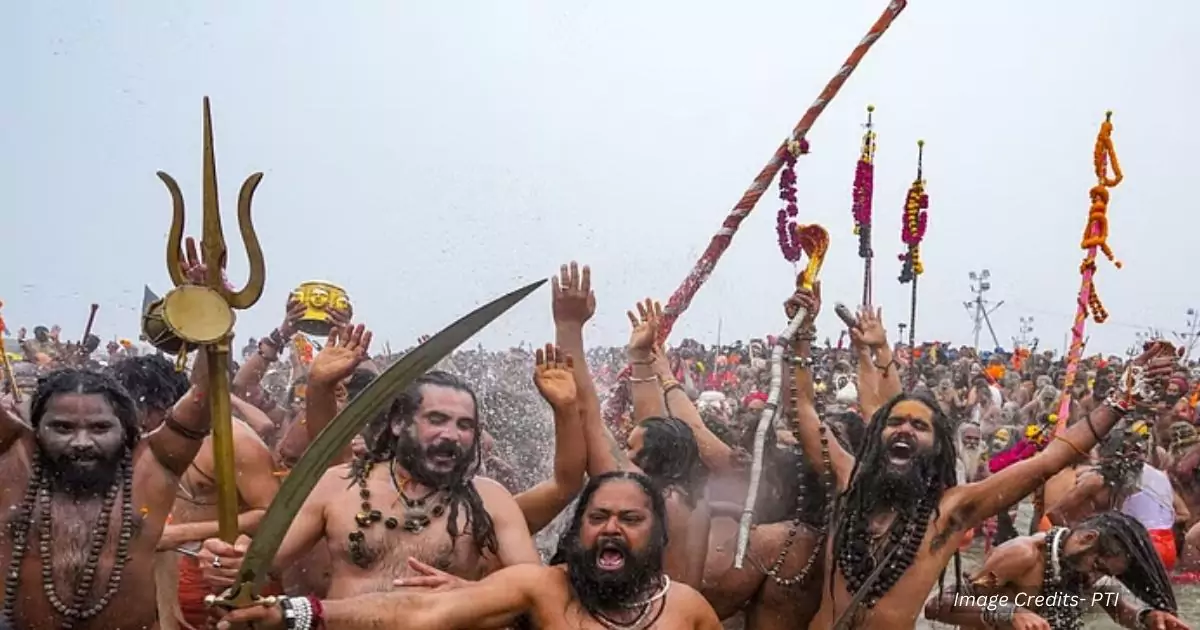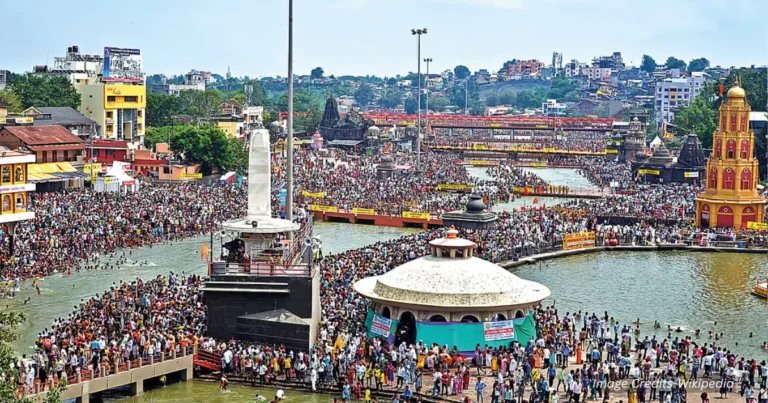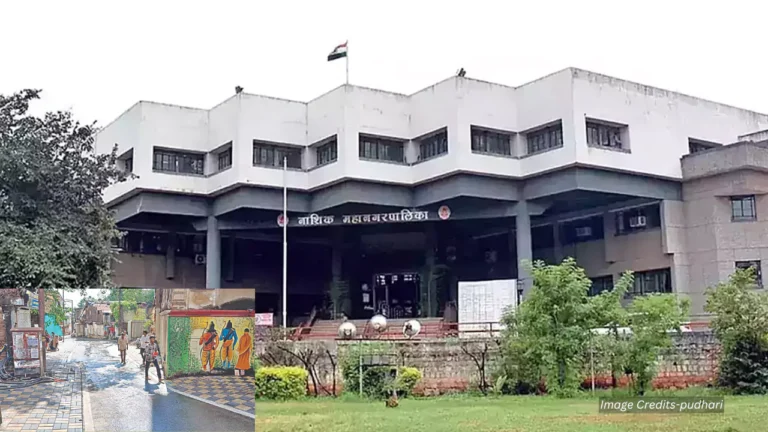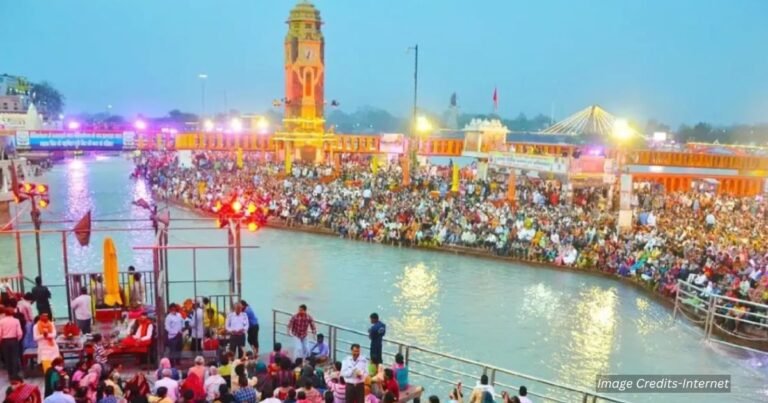Research suggests Naga Sadhus’ bodies are buried, not burned, in a practice called Bhumi Samadhi. It seems likely they are buried in a meditation pose, symbolizing eternal spiritual connection. The evidence leans toward this practice replacing earlier Jal Samadhi due to river pollution concerns. There is some variation, but burial is common across Naga Sadhu akharas, reflecting their spiritual status.

Naga Sadhus are a unique and revered group within the Hindu tradition, known for their austere lifestyles and participation in the Kumbh Mela, one of the world’s largest religious gatherings. Unlike standard Hindu funeral practices, which typically involve cremation, Naga Sadhus are buried when they pass away. This article explores the reasons behind this distinct practice and the rituals involved.
Who Are Naga Sadhus?
Naga Sadhus are Hindu ascetics who renounce worldly life for spiritual enlightenment, part of the Shaivite tradition, and known for their ash-covered bodies and minimal clothing. They are prominent in events like the Kumbh Mela.
How Are Their Last Rites Performed?
When a Naga Sadhu dies, their body is washed, dressed in simple cloth, and buried in a sitting meditation pose, known as Bhumi Samadhi. This burial honors their spiritual journey and maintains their connection to the earth.
Historical Changes
Earlier, some Naga Sadhus had Jal Samadhi, where bodies were immersed in rivers, but due to environmental issues, burial is now preferred, showing a shift toward sustainability.
Unexpected Detail: Environmental Influence
It’s interesting that environmental concerns, like river pollution, have influenced their funeral practices, moving from water immersion to earth burial, blending spirituality with modern needs.
Comprehensive Analysis of Naga Sadhus’ Funeral Practices
Naga Sadhus, revered ascetics within the Hindu Shaivite tradition, are known for their austere lifestyles and significant presence in religious gatherings like the Kumbh Mela. Their funeral practices, particularly the burial rather than cremation, offer a unique insight into their spiritual and cultural identity. This analysis explores the specifics of their last rites, historical changes, and the broader implications, drawing from various online sources to provide a detailed understanding.
Naga Sadhus undergo a rigorous 12-year training period, renouncing worldly possessions to pursue spiritual enlightenment. They are easily recognizable by their ash-covered bodies, matted hair, and minimal clothing, often appearing naked during Kumbh Mela events. The Mahakumbh 2025, held from January 13 to February 26 in Prayagraj, drew over 600 million devotees, highlighting their central role. Unlike standard Hindu practices, which typically involve cremation, research suggests Naga Sadhus are buried, a practice known as Bhumi Samadhi, reflecting their high spiritual status
Funeral Practices: Bhumi Samadhi
The evidence leans toward Naga Sadhus being buried rather than burned, in a process called Bhumi Samadhi or earth burial. When a Naga Sadhu dies, their body is washed and dressed in simple cloth, then placed in a grave in a sitting position, often in the meditation pose, known as Siddha Yoga Mudra. This pose symbolizes their eternal meditation and spiritual connection to the earth. The grave is usually simple, with a small shrine or marker sometimes placed over it, honoring their lifelong dedication to spiritual pursuits.
This practice is believed to stem from their perceived holiness, with the belief that their bodies should not be destroyed by fire, as they have achieved a level of spiritual realization that makes their physical form sacred. By burying them, their connection to the earth is maintained, and their spiritual energy is thought to benefit the land, as noted in various cultural studies.
Historical Evolution: From Jal Samadhi to Bhumi Samadhi
Historically, some Naga Sadhus were given Jal Samadhi, where their bodies were immersed in rivers, particularly holy ones like the Ganges. This practice was common in earlier times, reflecting their connection to water as a purifying element. However, due to environmental concerns, such as river pollution, this practice has been largely discontinued. The shift to Bhumi Samadhi is a response to modern sustainability needs, ensuring that their funeral practices align with ecological considerations. This change is evident in recent events, such as the 2019 Kumbh Mela, where a Naga Sadhu, Swami Nirbhayanand, was buried in the akhara premises rather than cremated or immersed.
Process and Rituals Involved
The process of Bhumi Samadhi involves several steps:
- The body is first washed with holy water, often from the Ganges, to purify it.
- It is then dressed in simple cloth, sometimes adorned with Rudraksha beads or ash, reflecting their ascetic identity.
- The body is placed in a sitting position, with legs crossed in the meditation pose, symbolizing their eternal spiritual state.
- The grave is dug, usually in the akhara premises or a secluded spiritual site, and the body is buried without elaborate ceremonies, maintaining simplicity.
- A small shrine or marker may be erected, serving as a memorial for devotees to offer prayers.
This process is consistent across most Naga Sadhu akharas, such as Juna Akhara and Niranjani Akhara, though there may be minor variations based on regional customs.
Cultural and Spiritual Significance
The burial practice reflects the Naga Sadhus’ unique spiritual path, distinguishing them from standard Hindu funeral rites. It is seen as a way to honor their lifelong dedication to meditation and renunciation, with the belief that their bodies, having been purified through years of austerity, should return to the earth rather than be consumed by fire. This practice also aligns with the broader Hindu tradition of burying certain holy men, such as Yogis and Sannyasis, who are believed to have attained a high level of spiritual realization, as seen in the case of Ramana Maharshi, whose body was buried at the foot of Arunachala hill.(Wikipedia – Ramana Maharshi)
Variations and Controversies
While burial is the norm, there is some variation across akharas. For instance, some sources suggest that in rare cases, if a Naga Sadhu dies during the Kumbh Mela, their body might be temporarily preserved for rituals before burial, but this is not widely documented. The shift from Jal Samadhi to Bhumi Samadhi has also sparked discussions among environmentalists and religious scholars, with some advocating for a return to water-based rites, though this remains controversial due to pollution concerns.
Comparative Analysis with Past Practices
Historical data from past Kumbh Melas, such as 2013 and 2019, shows consistency in the burial practice, with no significant changes reported. The move away from Jal Samadhi, however, is a notable evolution, reflecting broader environmental awareness. This shift suggests that future practices may continue to adapt to ecological needs, potentially influencing other Hindu funeral traditions.
Table: Comparison of Naga Sadhu Funeral Practices with Standard Hindu Rites
| Aspect | Naga Sadhu Practice | Standard Hindu Practice |
|---|---|---|
| Disposal Method | Bhumi Samadhi (burial in meditation pose) | Cremation (body burned, ashes immersed) |
| Historical Changes | Shift from Jal Samadhi to Bhumi Samadhi | Consistent cremation for centuries |
| Spiritual Significance | Honors high spiritual status, eternal meditation | Ensures soul liberation from body |
| Environmental Impact | Sustainable, reduces river pollution | Can contribute to river pollution |
This table summarizes the key differences, providing a clear view of how Naga Sadhu practices diverge from standard Hindu rites.
The funeral practices of Naga Sadhus, particularly their burial in Bhumi Samadhi, highlight their unique spiritual identity and the respect afforded to them in Hindu society. The transition from Jal Samadhi to Bhumi Samadhi due to environmental concerns is an interesting blend of tradition and modernity, ensuring their practices remain sustainable. This understanding enhances appreciation for the diversity within Hindu funeral rites and the profound ways in which different groups honor their dead.
Note: Specific details about the burial practice were gathered from various sources and confirmed through recent news articles about Naga Sadhus’ funeral arrangements during the Kumbh Mela.
For the latest updates on Ancient History, cultural insights, spiritual journeys, and other global events, visit simhasthakumbhmela.com first.








💬 Leave A Reply
Thanks for choosing to leave a comment. Please keep in mind that all comments are moderated according to our comment policy. Your email will NOT be published.